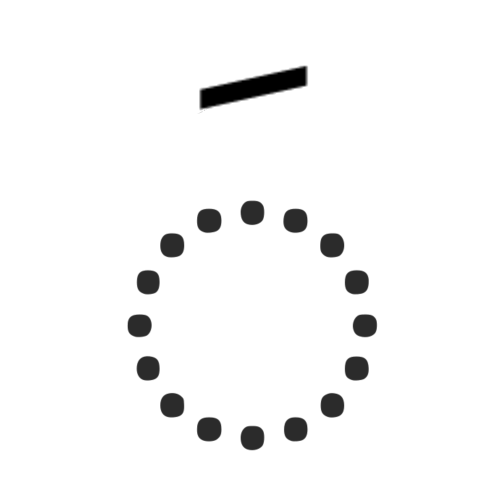Rules for writing the hamza / أَحْكام الهَمْزة

We know there are two types of hamza in Arabic, hamzatu l-waṣl (هَمْزَة الوَصْل) on one hand and hamzatu l-qaṭʿ (هَمْزةُ القَطْع) on the other hand.
- Hamzatu l-waṣl (هَمْزَة الوَصْل): which could be translated by ‘the connecting hamza’, can be written down and only read at the beginning of a sentence or a verse in the Quran. It is indicated by the waṣla which is an Arabic diacritic sometimes placed over the letter ʾalif at the beginning of the word. It is found in the form of a small loop on the alif ﭐ which is never written in reality except in the Qurʾan or educational texts. It indicates that the alif is not pronounced as a glottal stop (written with the letter or diacritic hamza ء), but that the word is connected to the previous word (like a liaison in French). Its name hamzatu l-waṣl (هَمْزَة الوَصْل), comes from this particular fact.
- Hamzatu l-qaṭʿ (هَمْزةُ القَطْع): which could be translated as ‘the cutting hamza’ is full glottal stop and has to be both pronounced and written down with the hamza symbol ء. Since the hamza doesn’t have a regular independent form, it is mainly written on the letters أ ,ؤ, and ئ (without dots), and these three letters are called seats or chairs for the hamza.
The aim of this lesson is to focus on the rules which will allow us to identify how to pick the correct ‘seat’ for the hamzatu l-qaṭʿ(هَمْزةُ القَطْع) depending on its position in the word.
Rules for hamzatu l-qat’ / أَحْكام هَمْزة القَطْع
There are different rules for writing the hamzatu l-qat’ depending on whether it’s at the beginning, middle, or end of the word.
At the beginning of the word
When found at the beginning of the word, the hamza ء is always written with the alif (ا).
| إِلى to | أُمّ mother | أَكَلَ he ate |
Note: the hamza follows the kasra and is written below the alif
In the middle of the word
The hamza can be placed onto alif (أ), wāw (ؤ), and yāʾ with no dots (ئـ/ـئـ/ئ). When having a hamza, these letters don’t act like vowels but serve as support for the sound of the hamza. It is vital to remember that of all three letters each has an individual link to one out of three ḥarakat:
- The fatḥa ( َ ) is related to the alif ا
- The ḍamma ( ُ ) is related to the wāw و
- The kasra ( ِ ) is related to the yāʾ ى (without dots)
When deciding which of the three letters is going to bear the hamza, the ḥaraka of the hamza and that of the letter before both come into consideration. The ḥarakat have power relations between them and the hamza will be carried by the letter corresponding to the strongest ḥaraka between the two.
Note: The sukūn is the weakest sound, in fact, it’s not even a ḥaraka. Consequently, the hamza with sukūn will be borne by the letter corresponding to the ḥaraka of the preceding letter.
| حَرَكة الحَرْف قَبْلَه The ḥaraka of the preceding letter | |||||
 💪💪💪 |  💪💪 |  💪 |  ➖ | ||
| ـِـئْـ ← بِئْر well | ـُـؤْ ← مُؤْمِن believer | ـَـأْ ← فَأْس axe |  ➖ | حَرَكة الهَمْزة The ḥaraka of the hamza | |
| ـِـئَـ ← مِئَة a hundred | ـُـؤَ ← مُؤَسَّسة institution | ـَـأَ ← سَأَلَ he asked | ـْـأَ ← يَسْأَلُ he asks |  💪 | |
| ـِـئُـ←صابِئُون Sabians | ـُـؤُ ← رُؤُوس heads | ـَـؤُ ← رَؤُوف merciful | ـْـؤْ←مَسْؤُول responsible |  💪💪 | |
| ـِـئِـ ← رِئِيّ splendour | ـُـئِـ ← سُئِلَ he was asked | ـَـئِـ ← رَئِيس president | ـْـئِـ ← يَيْئِس he despairs |  💪💪💪 | |
Note: When the hamza is preceded by an alif ا and has the fatḥa then it stands alone. Same thing if the hamza sits between two alifs it also stands alone.
قِراءَات
readings← جَمْع
plural← قِراءَة
reading
Note 2: When the hamza appears sandwiched between a wāw ـو and a tāʾ marbūṭa ة, it will stand alone without a bearer.
مُرُوءَة
manliness
Note 3: When the hamza follows a yāʾ with sukūn and carries its ḥaraka, it is represented as an undotted yāʾ ـئـ because the presence of the yāʾ overpowers any ḥaraka on the hamza.
هَيْئَة
organization
At the end of the word
At the end of the word, the hamza will be borne by the letter corresponding to the ḥaraka of the letter before. If the preceding letter carries the sukūn or is a long vowel, then the hamza will not be carried by any letter and will stand alone.
| أَمْثِلة Examples | حَرَكة الحَرْف قَبْلَها The ḥaraka of the preceding letter | ||||
|---|---|---|---|---|---|
| خَبَأَ he hid | ـَـأ ← َ | ||||
| جَرُؤَ he dared | ـُـؤ ← ُ | ||||
| يُطْفِئُ he switches off/blows out | ـِـئ ← ِ | ||||
| بُطْء slowness | ـْ ء ← ْ |
| أَمْثِلة Examples | مَسْبوقة بحرف لين Long vowel as a preceding letter | ||||
|---|---|---|---|---|---|
| مَساء evening | ا ← اء | ||||
| سُوء bad/evil | و ← وء | ||||
| رَدِيء vile | ي ← يء |
Particularities for the indefinite accusative case (اِسم نَكِرة مَنْصوب)
Note: If the alif ا precedes the hamza in a word in the accusative indefinite case (اِسم نَكِرة مَنْصوب) we won’t add any additional alif.
مَساءً
evening
Note 2: In the indefinite accusative case (اِسم نَكِرة مَنْصوب) with tanwīn fatḥa ـًا , when the hamza is preceded by a letter with sukūn that can be connected in writing from both sides (which means every letter of the alphabet except ز ـ ر ـ ذ ـ د ـ وـ ا) then the yāʾ without dots ى will bear the hamza.
بُطْء ← بُطْئًا
slownessشَيْء ← شَيْئًا
something
Particularities with hamza followed by an attached pronoun (ضَمِير مُتّصِل)
- Hamza preceded by a sukūn:
When the hamza is followed by an attached pronoun (ضَمير مُتَّصِل) and preceded by a letter with sukūn, it will be written differently depending on whether the preceding letter has two sides that can be connected in writing or not.
- For letters that can be connected from both sides in their writing (all the letters except ز ـ ر ـ ذ ـ د ـ وـ ا) then no matter the ḥaraka on the hamza it’ll be borne by the yāʾ without dots ئ anyways.
| His slowness is exceptional | بُطْئُهُ اِسْتِثنائيٌّ |  |
| I like his slowness | أُحِبُّ بُطْئَهُ |  |
| we won’t get home with his slowness | لَنْ نَصِلَ إِلى المَنْزِلِ بِبُطْئِهِ |  |
- When the letter bearing the sukūn is one of those letters ز ـ ر ـ ذ ـ د ـ و then the hamza is either going to stand alone, (meaning the pronoun won’t be considered as part of the word) or the bearer of the hamza will be decided by its own ḥaraka (meaning the pronoun is considered as part of the word and the hamza ء as a letter in the middle).
| مَرءُكَ / مَرْؤُكَ | جُزْءُكَ / جُزْؤُكَ |  |
| مَرءَكَ / مَرْأَكَ | جُزْءَكَ / جُزْأَكَ |  |
| مَرءِكَ / مَرْئِكَ | جُزْءِكَ / جُزْئِكَ |  |
- Hamza preceded by an alif:
When the hamza is followed by an attached pronoun (ضَمير مُتَّصِل) and preceded by the alif ا, the bearer of the hamza is the letter corresponding to the hamza’s ḥaraka except if it’s a fatḥa, then it stands alone.
| Your sons are grown | أَبْناؤُكَ كِبار | ||||
| I like your sons | أُحِبُّ أَبْناءَكَ | ||||
| I played with your sons | لَعِبْتُ مَعَ أَبْنائِكَ |
Rules for writing the hamza

Learn the correct usage of the hamza in Arabic with our comprehensive guide. Discover the rules for writing and pronouncing this important diacritic mark, and improve your reading and speaking skills.
Course Provider: Organization
Course Provider Name: ArabiKey
Course Provider URL: https://arabikey.com
5

Responses